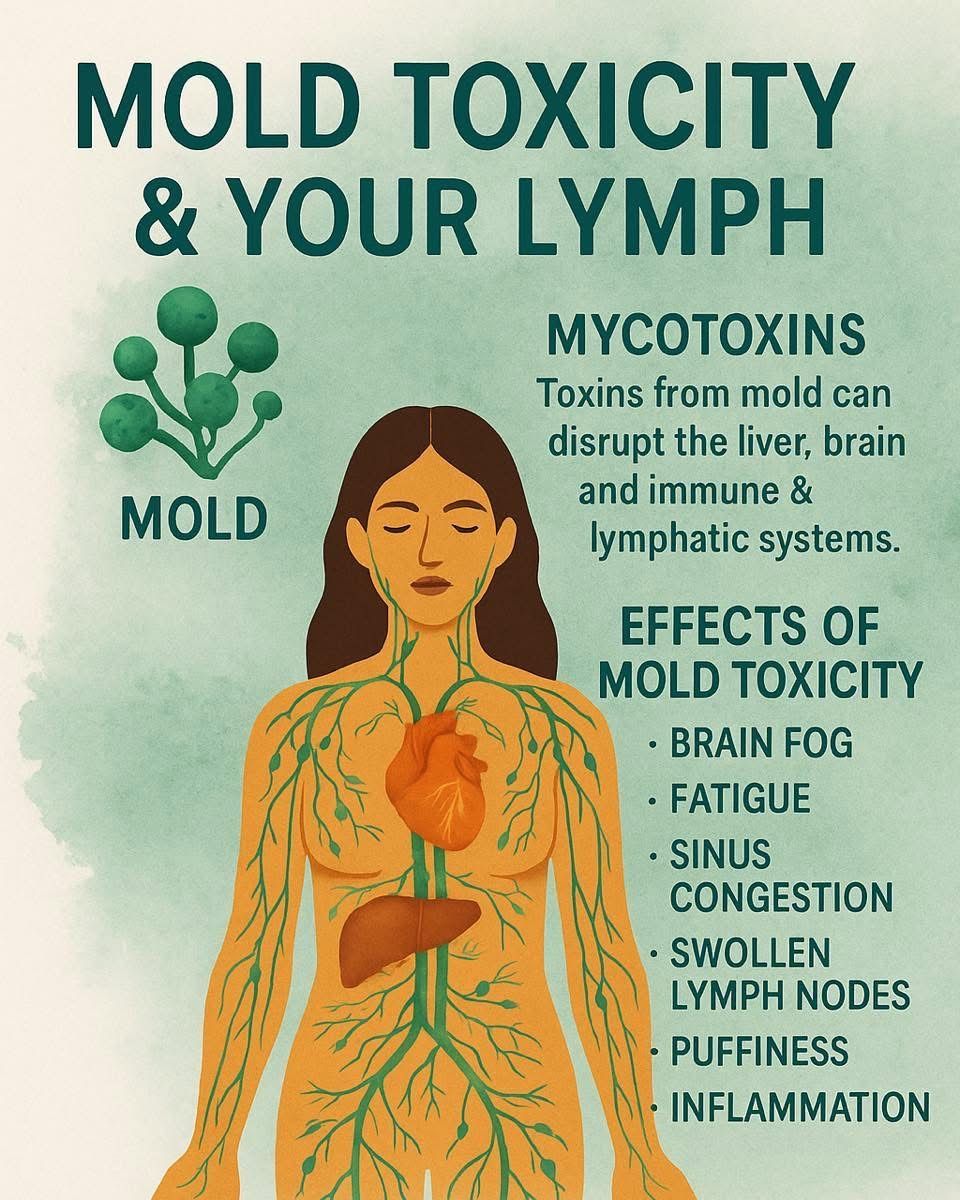How Mold Exposure Overwhelms Your Lymphatic System (and What to Do About It)
The silent connection between mold toxicity and lymphatic congestion most doctors miss
How Mold Exposure Overwhelms Your Lymphatic System (and What to Do About It)
When people think about mold, they usually imagine musty basements or spots on the wall. But for many of my clients, mold isn’t just an environmental nuisance. It’s a root cause of chronic symptoms that have been dismissed, mislabeled, or misunderstood for years. One of the systems most affected by mold exposure is the one that rarely gets enough attention—the lymphatic system.
Let’s break it down.
Why Mold Matters More Than You Think
Mold releases microscopic toxins known as mycotoxins. These aren’t just irritants—they’re biologically active poisons that can disrupt immune function, gut health, neurological function, and your body’s natural drainage pathways. And one of the first systems to take a hit? Your lymphatic system.
What Is the Lymphatic System, Really?
Your lymphatic system is like the body’s cleanup crew and drainage system. It moves lymph fluid through a network of vessels and nodes, removing waste, toxins, and pathogens. It’s crucial for immune response and overall detoxification. But unlike the circulatory system, the lymphatic system doesn’t have a pump. It relies on movement, hydration, breathwork, and proper nutrition to function efficiently.
Now imagine it trying to do its job while being constantly bombarded by mold toxins.
How Mold Disrupts Lymphatic Flow
Mold exposure can:
- Increase inflammation throughout the body
- Lead to thickened lymph fluid that moves slower
- Congest lymph nodes, especially in the neck, armpits, and groin
- Weaken immune defense inside the lymphatic system
- Cause swelling, puffiness, and fluid retention
- Create chronic fatigue and brain fog as toxins recirculate
If you’ve ever felt puffy, foggy, or swollen after being in a water-damaged building, you’ve already felt the effects of lymphatic congestion.
What Most People Get Wrong
Most people chase symptoms without clearing the root. They try detox teas, lymphatic massage, or drainage drops—without identifying the source of the toxin overload. If you’re still breathing in or living around mold, you’re filling the bucket faster than your lymph system can drain it.
Worse, many practitioners overlook mold altogether. They treat sinus issues, hormonal imbalances, autoimmune flares, or chronic fatigue—without asking the question: Could mold be slowing down the entire detox system?
What We Do Differently
At Executive Functional Healing, we don’t guess. We test for mold and mycotoxin exposure using functional lab panels. But we also focus on building up the body’s drainage pathways before we try to push detox. That includes:
- Opening the lymphatic system naturally
- Reducing inflammation through targeted nutrition
- Supporting mitochondrial health (because drainage requires energy)
- Identifying and removing the source of mold exposure
- Rebuilding terrain with binders, hydration, movement, and nervous system support
We don’t force detox. We support the body’s natural ability to clean house—starting with the lymph.
Call to Action:
If you’ve tried everything but still feel puffy, sluggish, foggy, or swollen—mold may be playing a bigger role than you think. You don’t have to figure this out alone. Book a free 15-minute call at www.executivefunctionalhealing.com and let’s uncover what’s really slowing you down.

